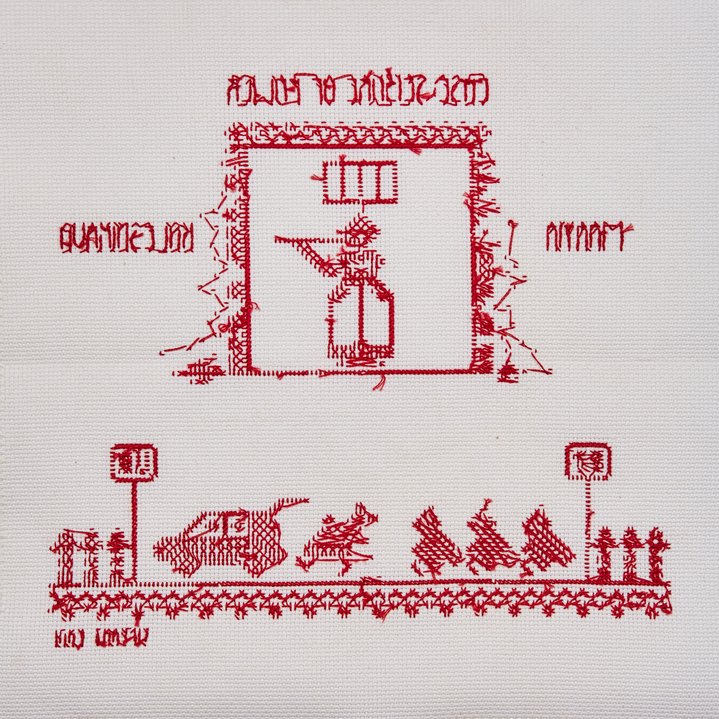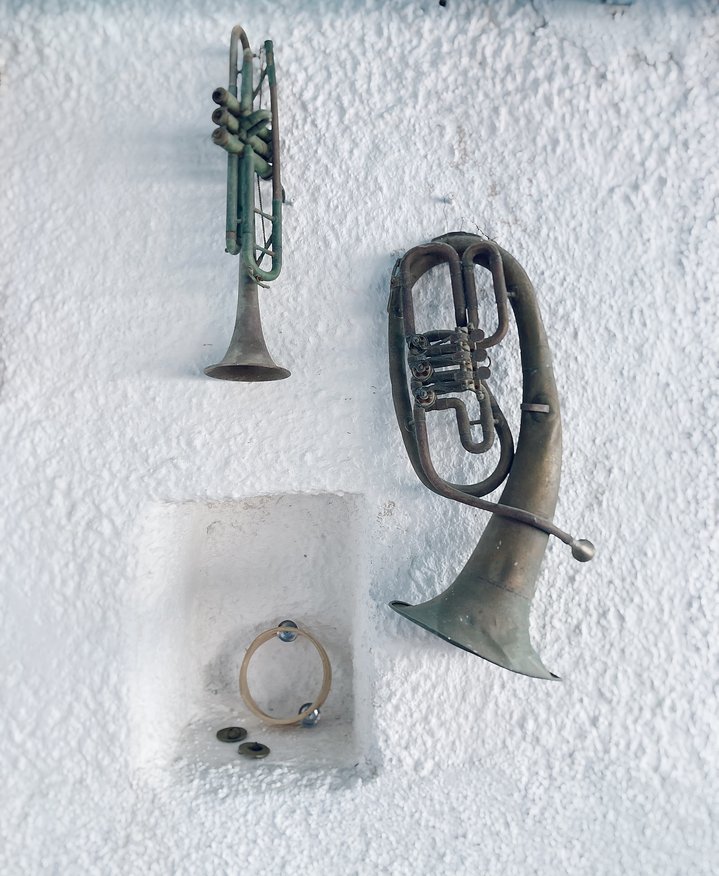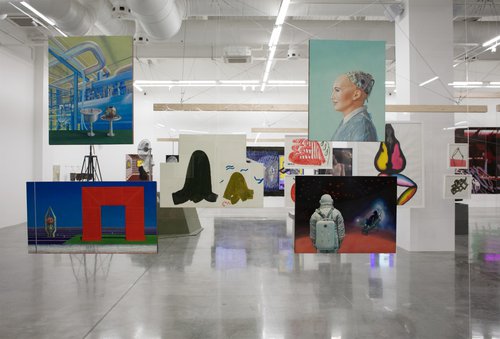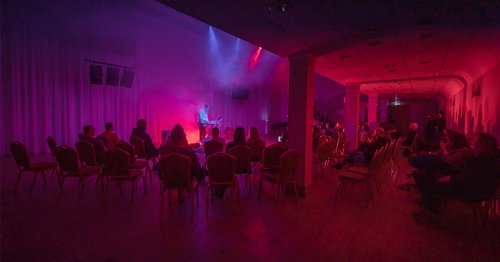A contemporary art festival in Latvia raises tough questions
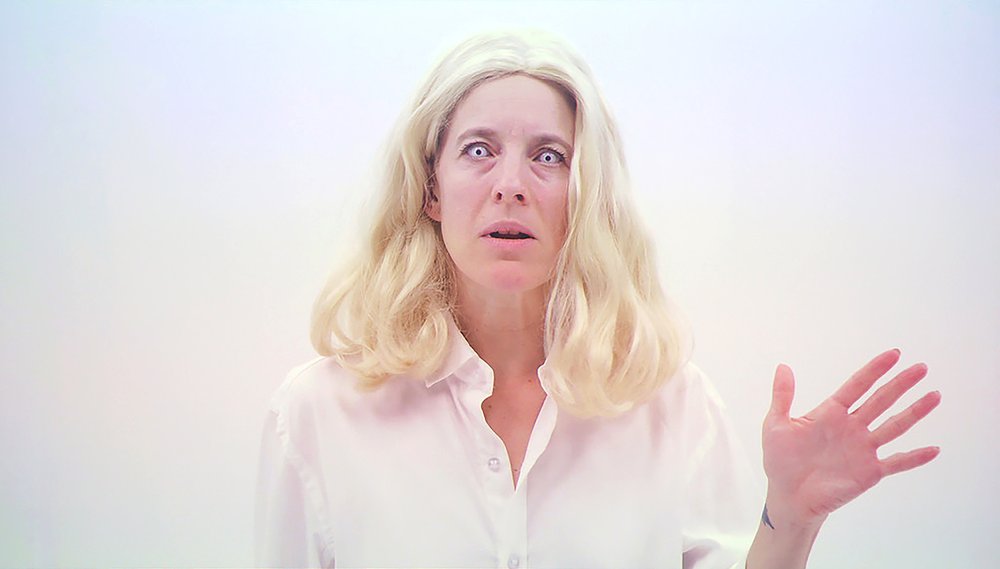
Candice Breitz. Whiteface. Video. Installation view, 2022. Courtesy of Museum Folkwang
The 13th edition Survival Kit, a contemporary art festival in Riga, is now open. Called ‘The Little Bird Must Be Caught’ it shows how art can react to social and political issues and promote change for the better.
The grandiose abandoned late 19th century neo-Renaissance building of the former Riga Stock Exchange Bank, in the historic centre of the city, is an impressive if eerie and crumbling monument to former grandeur and wealth. It has been opened up to the public, its looping tiled staircases, corridors, spacious halls and dilapidated offices filled with strange sounds, and screens of all sizes can be seen around every corner. Each year Latvia’s annual contemporary art festival, ‘Survival Kit’, occupies a different site in one of Riga’s many run down, disused buildings. Now in its thirteenth year the festival’s title ‘Survival Kit’, comes from its inaugural edition which directly followed the economic crisis in 2009. The organisers then saw a need for a collective creative hivemind for survival strategies. These distant times seem like child’s play today in what is becoming an urgent and real quest for survival; in Europe such an approach looks more like a luxury now.
‘The Little Bird Must Be Caught’ is the title of this year’s festival, curated by iLiana Fokianaki, a Greek art curator, theorist and educator based in Athens and Rotterdam. She chose a line by Latvian poet Ojārs Vācietis’ (1933-1983) as her starting point: a metaphor for Latvia’s subjugation by the colonizing force of Russia, written in the late seventies, and now resounding with an exaggerated urgency. The show weaves through interlinked themes of art’s relationship with democracy, freedom of speech in the face of totalitarian dictatorships, the power of words and language, poetics as tools of dissent, their sonic qualities, sound art, song, the voice, or its absence.
To this end the show is heavily laden with video and sound pieces, making up almost two-thirds of the volume of works. This makes for an immersive experience in which to lose yourself for a day, dipping in and out of these virtual vistas while wandering through the labyrinthine walls which house them, and you’ll need to allow generous time to see the many lengthy works, and engage with diverse geopolitical contexts. Though the focus is on the political climate of post-soviet countries, including Latvia, Ukraine, and Belarus, other contexts are covered. Rojava Film Commune, showing traditional chants from this incredible autonomous region in Syria; Anton Vidokle’s new film showing the story of Gilgamesh restaged by Kurdish female actors on the banks of the Tigris; the Katanga people of the Congo at the crux of Christianity and copper mining in a mesmerising video showing the process of molten ore transformed into crosses by Sammy Baloji (b.1978). These geographies removed from the Latvian context probably require some contextualisation from the viewer to gain their full meaning and engagement.
Turner prize winner Laure Prouvost (b. 1978) is represented by sign artworks dotted around the entire building and sound pieces, both far more modest than her video and installation works. A sizeable proportion of the artists are Latvian, some of whom have been commissioned new works especially for the festival, notably a large kinetic object greeting visitors on the ground floor by Krišs Salmanis (b. 1977), a constantly moving wave of plastic film, symbolizing his emotional reaction to the war in Ukraine, poignant and poetic. Mykola Ridnyi (b. 1985) is the only Ukrainian, with his 2017 video “NO! NO! NO!” harking back to the roots of the current conflict.
“Many will question whether art is necessary or important at this very moment. The answer as we have seen in so many wars, crises, and tumultuous events in the past can only be: it absolutely is.” Argues the curator, but for me the question remains an open, and very individual one. As I approach the festival one day a well-groomed middle-aged Russian-speaking couple leaves the foyer “It’s a Nazi event” explains the husband to his wife. Riga is emblazoned with blue and yellow flags on every corner, yet half of its population are native Russian speakers. The current atmosphere in the capital is tense, dense, and explosive. What kind of art can have the power to cut through this fog? The exhibition is interspersed with historic photographs of protest actions that took place in the years leading up to the independence of the Baltic countries from the USSR (1987-1991), known as the Singing Revolution for the role of traditional folk songs as a mode of protest. One particularly renowned action, The Baltic Way, involved two million people holding hands to form a giant human chain of over 600 kilometres long linking three capital cities:Tallinn, Riga, and Vilnius. These modest black and white documents are a real demonstration of the power of artistic gesture to foster political change.






